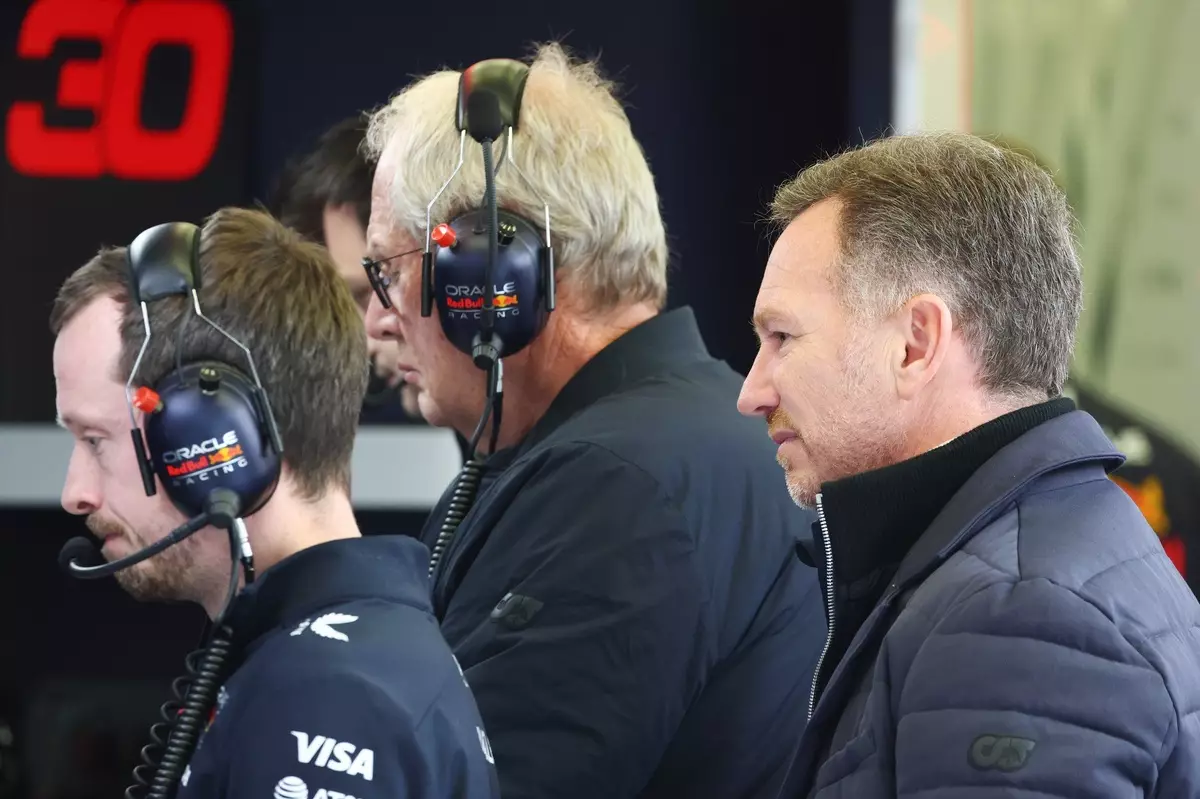In the fast-paced world of Formula 1, the difference between victory and defeat can often hinge upon mere milliseconds. Red Bull Racing, once the formidable titan of the sport, finds itself navigating treacherous waters as it grapples with significant discrepancies between wind tunnel data and real-world performance. Team principal Christian Horner’s analogy comparing this predicament to “looking at two different watches” succinctly encapsulates the stark contrast between data projections and on-track realities. As reigning champion Max Verstappen continues to face challenges despite his individual success, it is becoming increasingly evident that the reigning champions of F1 are in urgent need of recalibration.
The struggles Red Bull faced during the 2024 season were far from inconspicuous. The issues that plagued the RB21 echoed the difficulties Verstappen encountered in his title defense, highlighting a fundamental challenge within the team’s engineering processes. After the disappointing outcome of the Bahrain Grand Prix, which underscored these ongoing concerns, Horner convened key personnel for ‘crisis’ talks. This proactive measure indicates an acknowledgment that swift action is essential to reclaiming the team’s lost prowess.
The Role of Data in Performance Enhancement
Data-driven decision-making is the lifeblood of modern-day motorsport. However, when the data fails to align with performance outcomes, it raises questions about the reliability of the tools being used. Horner’s insistence that the team recognizes their problems but struggles to implement timely solutions is particularly troubling. The stark realization that their wind tunnel results do not reflect the track dynamics is not only frustrating but also indicative of a broader systemic issue.
The complexities of Formula 1 engineering mean that even slight errors in simulating aerodynamic performance can cascade into significant performance discrepancies. Horner pointed out that while the team has mastered set-up adjustments—allowing them to mask some issues during previous races—the Bahrain Grand Prix unmasked the vulnerabilities within the current car setup. The quest for grip, especially at corner entry, is at the crux of these technical challenges, necessitating an effective aerodynamic solution to provide Verstappen the confidence he needs to push the limits of the car.
Challenges with the Current Regulations
Compounding Red Bull’s troubles is the impending nature of the current regulatory framework, which does not allow for substantial overhauls or innovations at this point in the season. Unlike competing teams such as Haas and Mercedes, which have made strides in performance, Red Bull has found itself hamstrung by the very same regulations that once facilitated their dominion in the sport. This stagnation underscores an unsettling lack of adaptability in a sport that favors relentless innovation.
The reliance on the existing wind tunnel, which Horner admits is not fully addressing the team’s needs, further complicates matters. With the end of the current regulations in sight, the window for meaningful development is rapidly closing. This limited timeframe adds pressure to rectify the identified issues, and the challenge now lies in translating track data into actionable engineering solutions.
Looking Ahead: Future Prospects and Innovations
Despite the current challenges, there is a glimmer of hope in the form of a new wind tunnel facility slated for 2027. While Horner expressed optimism about upcoming developments, it remains clear that immediate solutions are required to bridge the existing gap in performance. Without a doubt, the team’s strong technical roster has demonstrated a capacity for innovation, yet the urgency to reach a resolution on existing issues cannot be overstated.
As Red Bull races towards the end of the current regulation cycle, the accumulation of track data from recent Grand Prix events could prove invaluable. Leveraging this wealth of information may offer the insights needed to propel forward in meaningful ways—provided the team can reconcile the discrepancies between their simulations and real-world performance.
However, the aforementioned challenges serve as a stark reminder that relying solely on past accolades and previous successes isn’t enough to remain competitive in the ever-evolving landscape of Formula 1. As the team embarks on a quest for answers, the industry will be keenly observing how Red Bull adapts to the current hurdles and capitalizes on promising leads to reestablish its dominance. The pressure is unmistakable, and the stakes have never been higher for a team that once epitomized excellence on the racetrack.

